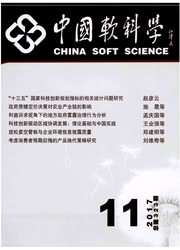

 中文摘要:
中文摘要:
微型金融机构的双重使命与其暗含的内在冲突性决定了传统效率测度方法难以对其实际经营效果进行全面综合的反映。对此,本文采用499家国际国内微型金融机构数据,基于“双重底线”视角分别构建了财务效率和社会效率(社会深度、社会广度和综合社会效率)指标,并运用DEA—Spearman分析法测度了微型金融机构财务和社会效率间冲突程度,最后采用Tobit回归对其效率的影响因素进一步实证分析。研究结果表明:微型金融机构在其发展过程中难以同时兼顾财务效率与社会效率,通常情况下都会为了保证其财务的可持续性而不得不牺牲社会服务效率,进而出现“使命漂移”现象,最终降低了金融的普惠性,这一现象在中国表现尤为突出;此外,中国的微型金融机构正步入财务导向的发展模式,如资产规模、人均贷款规模、自主经营效率等因素能够显著促进微型金融机构的财务效率,相反,对其多维度的社会服务效率提高却呈现出了不同程度的抑制作用。
 英文摘要:
英文摘要:
Due to the dual missions of Microfinance Institutions(MFIs) and the inherent conflicts between its social andfinancial goals, traditional efficiency measurement applying on MFts has significant limitations. In this regard, the studyadopted DEA-Spearman, Tobit regression and constructed the financial, social depth, social breadth, socialcomprehensive efficiency models to examine the technical efficiency and tradeoff effects of 499 MFIs based on theprinciple of "Double Bottom Line". The research results confirmed the existence of dual efficiency' s conflict withinwhich probably induced MFIs' "Mission Drift", and the empirical study demonstrated that this circumstance is worryingparticularly in China. Thus, sacrificing the efficiency of social services to maintain high financial sustainability for MFIsis probably unavoidable in reality. In addition to this, other study results indicated that China' s MFIs are stepping intofinancial orientation, and asset size, loan scale, operational self-sufficiency factors promoting financial efficiency of MFIssignificantly, however, increasing of assets scale and loan size may weaken the social performance of MFIs.
 同期刊论文项目
同期刊论文项目
 同项目期刊论文
同项目期刊论文
 期刊信息
期刊信息
